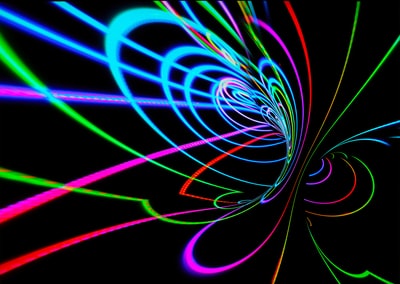The Electromagnetic Spectrum
The range in which wavelengths occur are represented on the electromagnetic spectrum.

Visible light is only one type of electromagnetic radiation. Others have shorter and longer wavelength than visible light. Together they form a continuous spectrum.
——————————————————
Ray diagrams
You may have to draw a ray diagram in your exam.
First of all you draw your mirror as a straight line. Thick hatchings represent which is the reflective side.
- Light rays are drawn as solid straight lines. These are the incident rays. Arrowheads show which direction the light is travelling.
- Light rays which look like they’re coming from behind the mirror are drawn as dashed lines. Where they cross is where the image seems to be coming from.
- Don’t forget that the angle of incidence is equal to the angle of reflection. Make sure that your incident rays follow this law.
The image (where the dashed lines cross) is:
- virtual as it cannot be touched or projected
- upright (as opposed to upside down)
- laterally inverted which means that left appears to be on the right hand side and right appears to be on the left hand side
Try standing in front of a mirror. You’ll see that your virtual image is upright and inverted.

 First of all you draw your mirror as a straight line. Thick hatchings represent which is the reflective side.
First of all you draw your mirror as a straight line. Thick hatchings represent which is the reflective side.